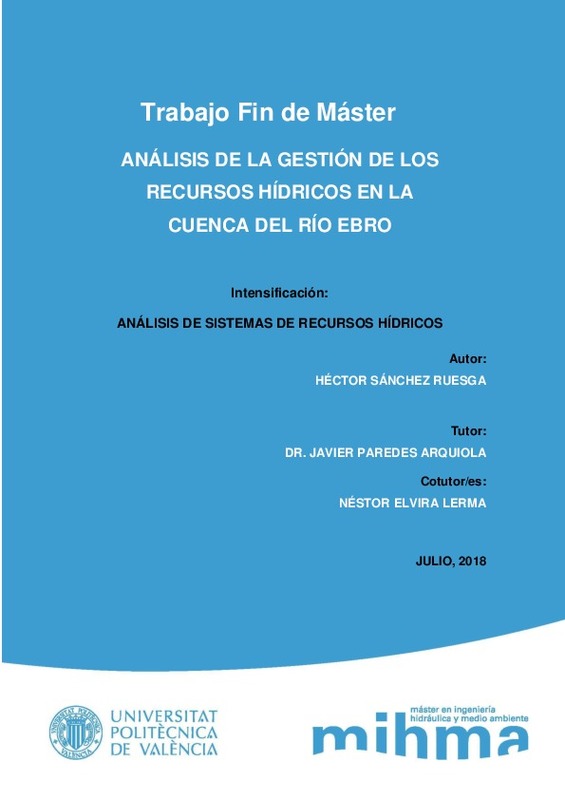|
Resumen:
|
La cuenca del río Ebro ubicada en el cuadrante noreste de la Península Ibérica es la cuenca hidrográfica más extensa de España y una de las principales cuencas mediterráneas europeas. Sin embargo, la gran magnitud de la ...[+]
La cuenca del río Ebro ubicada en el cuadrante noreste de la Península Ibérica es la cuenca hidrográfica más extensa de España y una de las principales cuencas mediterráneas europeas. Sin embargo, la gran magnitud de la demanda agraria y la escasa precipitación en ciertas zonas de la cuenca hace que el sistema presente problemas a la hora de garantizar el suministro de los recursos hídricos.
Es por ello que en el presente trabajo se pretende analizar el estado actual del sistema de recursos hídricos de la cuenca del Ebro, así como desarrollar y aplicar unos Índices de Sostenibilidad Hidrológica a los diferentes sectores del sistema y ver la evolución de estos índices en diferentes escenarios futuros. Para ello se hace uso de las herramientas Aquatool y SIMGES las cuales proporcionan la gestión y el análisis del modelo del Ebro, y el software MATLAB, mediante el cual se obtienen los resultados de los Índices de Sostenibilidad para las demandas y los caudales ecológicos. Con los resultados obtenidos se hace un análisis de la situación de los diferentes sectores de la cuenca identificando los problemas existentes en cada uno de ellos.
Finalmente se realizan varias simulaciones considerando diferentes escenarios futuros, donde se tienen en cuenta los efectos del cambio climático, los cambios en la demanda y la puesta en funcionamiento de embalses que actualmente se encuentran en fase de construcción.
[-]
The basin of the Ebro river located in the northeast quadrant of the Iberian Peninsula is the most extensive basin of Spain and one of the main European Mediterranean basins. However, the great magnitude of the agrarian ...[+]
The basin of the Ebro river located in the northeast quadrant of the Iberian Peninsula is the most extensive basin of Spain and one of the main European Mediterranean basins. However, the great magnitude of the agrarian demand and the low rainfall in certain areas of the basin cause problems in the system when it comes to guaranteeing the supply of water resources.
That is why this work intends to analyze the current situation of the water resources system of the Ebro basin, as well as developing and applying Hydrological Sustainability Indices to the different sectors of the system and see the evolution of these indices in different future scenarios. This is done using the Aquatool and SIMGES tools which provide the management and analysis of the Ebro model, and the MATLAB software, through which the results of the Sustainability Indices for the demands and ecological flows are obtained. Once the results are obtained, an analysis of the situation of the different sectors of the basin is made, identifying the existing problems in each one.
Finally, several simulations are carried out considering different future scenarios, taking into account the effects of climate change, the changes in the demand and the operation of reservoirs which are currently in the construction phase.
[-]
|







